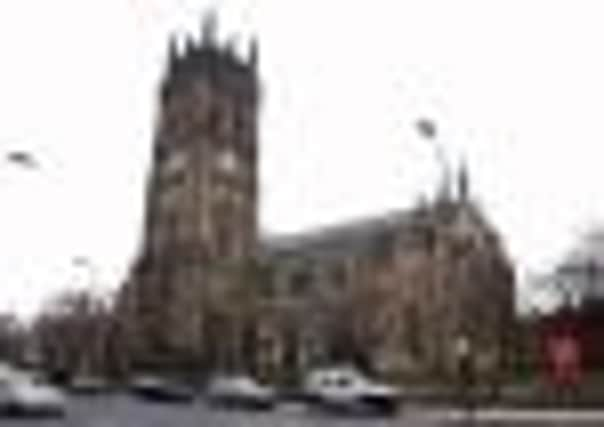The minster that will minister to a bigger flock in future


On September 2, there will be more music than usual, even for a Sunday, when the status of the Parish Church will change to Minster. Leeds Waits will sing ancient plain chant, medieval instruments will be played and brass fanfares sounded. Joyful hymns will naturally have their place and the bells will peal, of course.
Part of the formalities of the Minster making will be the handing over of a candle of prayer by the rectors of Yorkshire’s existing minsters – at York, Ripon, Beverley, Halifax, Rotherham, Doncaster and Dewsbury. A prayer candle for the new Minster will then be lit for the first time, and Bishop of Ripon and Leeds John Packer will unveil the proud new sign outside the building in Kirkgate.
Advertisement
Hide AdAdvertisement
Hide AdAfter all that, the throng of about 700 will enjoy a light buffet and a toast to the Leeds Minster made with the brand new Minster Ale, concocted by Leeds Brewery to mark the occasion.
But when the excitement has died down, what difference will a change of name make to the day-to-day work and mission of the 1,300-seat minster which, by the way, is believed by scholars to have been a minster before, in Saxon times.
The major evidence of this is the 10th century stone cross inscribed with pagan figures alongide Christian ones with books and haloes.
The current building, put on the site in 1841 and paid for by local benefactor Dr Walter Hook cost, £26,000 as a replacement for its rundown predecessor. Christians have been worshipping in different buildings on the site for well over 1,000 years, but the status of Minster, although given to the church early on, somehow got lost along the way.
Advertisement
Hide AdAdvertisement
Hide AdMinsters pre-dated the parish system we know. They were places where monks or priests gathered and prayed before going out into surrounding areas to serve the people and spread Christian hope.
In line with that ancient remit, the change from church to Minster will extend the scope of the work of St Peter’s, says Precentor (that means she starts the choral signing at services) and Team Vicar Sue Wallace.
“We will have a bigger brief than that of a parish church, which encompasses the immediate area and part of Lincoln Green. The status means we can help and support work done in all of the Leeds parishes, hold more events, do more work with schools and attract more visitors.”
No extra money comes to the Minster from the Church of England centrally (the Parish Church’s four full-time clergy are paid a stipend by the CofE, but all the costs of running the building are funded by donations and fundraising events), but Rev Wallace believes the Minster-to-be offers a lot to the Leeds tourism trail.
Advertisement
Hide AdAdvertisement
Hide Ad“Apart from the beautiful Saxon cross, there are very special Venetian mosaics by Salviati and 16th century Flemish stained glass panels in the East Windows, which came from a convent in Flanders. The building was designed around them.”
The Church also features the Penny Window, a less ornate but pretty design, paid for by poorer Victorian parishioners, who contributed a penny each.
“Our monuments include a Tudor tomb, a monument to a soldier from the Middle Ages and a 1593 oak ‘credence table’ (where the water and wine were prepared during the service), now used as an altar.”
One of the many points of interest in the Lady Chapel, which is dedicated as a war memorial, is a tribute to Captain Lawrence Oates, formerly of the West Yorkshire Regiment, who was on Scott’s ill-fated South Pole expedition and gave his own life in an attempt to save his companions.
Advertisement
Hide AdAdvertisement
Hide Ad“The greater profile will lift the stature of the Parish Church,” says Rev Wallace. “We will reach out beyond our current community and help more people. We also want the fact that we are becoming a minster to be of benefit to other churches.
“We really think more tourists will want to come and discover our beautiful building and work. That has certainly been the experience of Halifax Minster since its status changed in 2009. There’s a great sense of excitement around here about the Minster Making – and about the beer!”